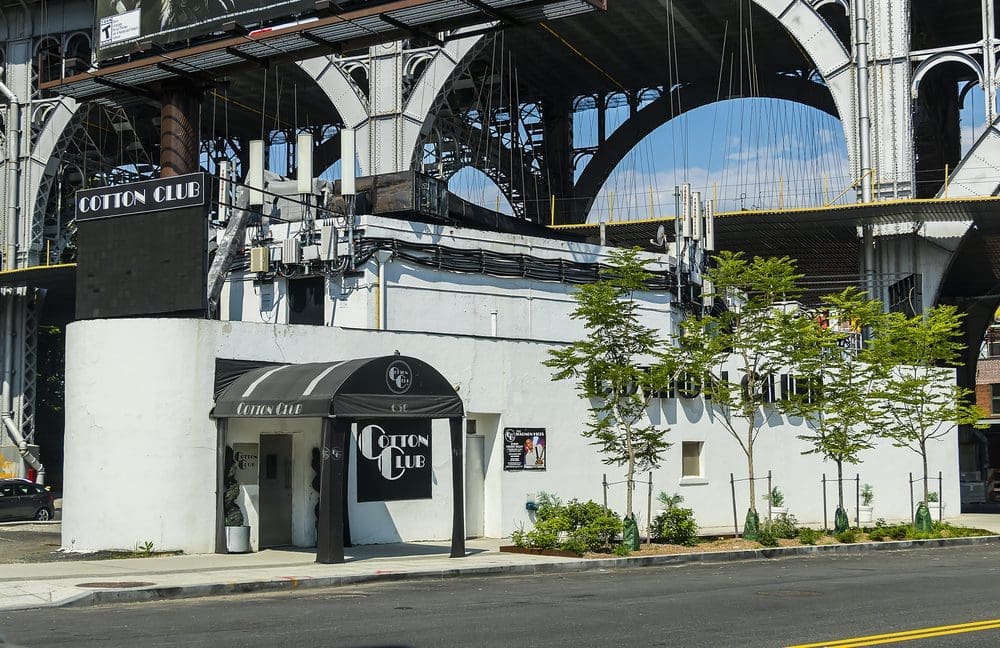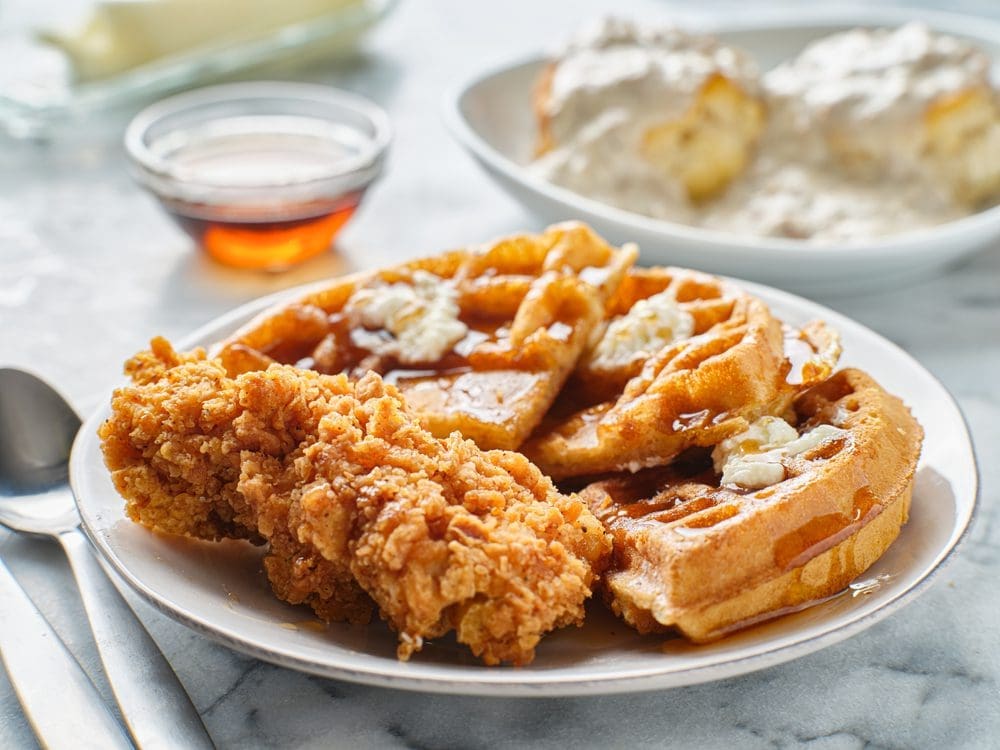Fried chicken and waffles is often wrongly associated with the American South. Others say it is an LA thing. But, what if I told you its origins lie elsewhere? That’s right, the story of how chicken and waffles originally came to be takes place neither in the South nor on the West Coast. To discover the history of this beloved dish, you have to travel to New York City.
Harlem, New York—The New York City borough that truly never sleeps. Harlem is also the birthplace of many pieces of American culture. Music, activities, art, and yes, food.
The Harlem Renaissance was a period of time between the 1920s and 1930s in which the New York City Borough became a center for black culture in The States. Jazz music was one of the biggest advancements in Harlem during this time. The likes of many musicians were flocking to Harlem from all over the country to play in some of the City’s biggest clubs. The Cotton Club is one in particular that always comes to mind. A club where black musicians were allowed to play, but only white audience members could attend. Louis Armstrong, Cab Calloway, and Fats Waller were just a small fraction of the dozens of musicians that advanced their careers at this club.
When learning of The Harlem Renaissance, it is likely you’ll hear the big names: Louis Armstrong, Cab Calloway, Langston Hughes, Alaine Locke; but what about the names that fueled their work day in and day out? Ann and Joseph Wells, founders of Well’s Supper Club. The Harlem residents kept some of history’s greatest minds fed throughout their careers.
Picture this: You’re a jazz musician in the 1930s and you just finished up a late-night gig. Where do you go? It’s true, Harlem was, and still is to an extent, a neighborhood that flourished in the night. During the late 1930s this was apparent. The Jazz Age had just peaked, and Prohibition was over. With this, musicians needed a place to hang out after the show was over. The quaint restaurant became the solution. Well’s Supper Club (also known as Well’s Restaurant) opened in 1938 and became an immediate go-to-spot for many famous musicians. 
What would come out of this was not just big for the jazz world—it was significant for the food world as well. Soul food and Caribbean food were two of the fares you could experience at Well’s. The restaurant became the place for Creole cuisine and other comfort classics. Now, what is there to eat when it is 3:30 a.m. and it is neither dinner time nor breakfast? The middle of the night is a strange time zone when you are looking for something to eat—anything really goes. It is this absence of formality that is able to create the unorthodox.
Well’s, at this hour, was out of many of their items that would be defined as “dinner,” and was not quite ready to start serving breakfast. Yet, this was anything but a problem for the musicians eating there. Why not just combine a little bit of both?
And that’s exactly what happened. Musicians could enjoy the leftover fried chicken from dinner service with a piping hot waffle to go alongside it. Thus, chicken and waffles was created; or, was it?
Yes, and no. The original recipe for chicken and waffles comes from the Pennsylvania Dutch. When Thomas Jefferson brought the first waffle iron to The States from Europe, it revolutionized breadmaking in a way. A much quicker, oven-less style of bread made from a yeasted dough. However, when the Pennsylvania Dutch got a hold of it, they utilized it to their biggest advantage. Taking mounds of shredded chicken, either boiled or roasted, plopping it atop a hot waffle before smothering it all with a white chicken gravy. This is, of course, desirable, but it isn’t what we tend to think of as chicken and waffles.
While Well’s had a cult following early on in the 1930s, Herb Hudson—another Harlem native—is responsible for popularizing chicken and waffles nationwide. Albeit much later. In 1975, Hudson moved to LA and brought the Harlem-famous chicken and waffles alongside him. He opened Roscoe’s House of Chicken and Waffles and quickly hit fame. Hollywood’s most famous couldn’t get enough of the comfort food and though Hudson didn’t invent the food, he did help to spread its greatness.
Today, chicken and waffles can be found across the nation.
It is important to remember that behind every food is the history of how it came to be. So, before chicken and waffles was the trendy dish you see for 20 dollars on a brunch menu or the Los Angeles classic served at Roscoe’s, it was actually a Harlem staple fueling some of history’s brightest minds in the arts. Well’s Supper Club closed for good in 1999 and Harlem lost one of its original gems. It is not often that a place has such an impact on the history of a neighborhood, but Well’s did just that. Furthermore, Well’s Supper Club impacted music and the arts forever.
Harlem
By Langston Hughes
What happens to a dream deferred?
Does it dry up
like a raisin in the sun?
Or fester like a sore—
And then run?
Does it stink like rotten meat?
Or crust and sugar over—
like a syrupy sweet?
Maybe it just sags
like a heavy load.
Or does it explode?
Peter Candia is the Food + Drink Editor at New Jersey Digest. A graduate of The Culinary Institute of America, Peter found a passion for writing midway through school and never looked back. He is a former line cook, server and bartender at top-rated restaurants in the tri-state area. In addition to food, Peter enjoys politics, music, sports and anything New Jersey.
- Peter Candiahttps://thedigestonline.com/author/petercandia/
- Peter Candiahttps://thedigestonline.com/author/petercandia/
- Peter Candiahttps://thedigestonline.com/author/petercandia/
- Peter Candiahttps://thedigestonline.com/author/petercandia/




